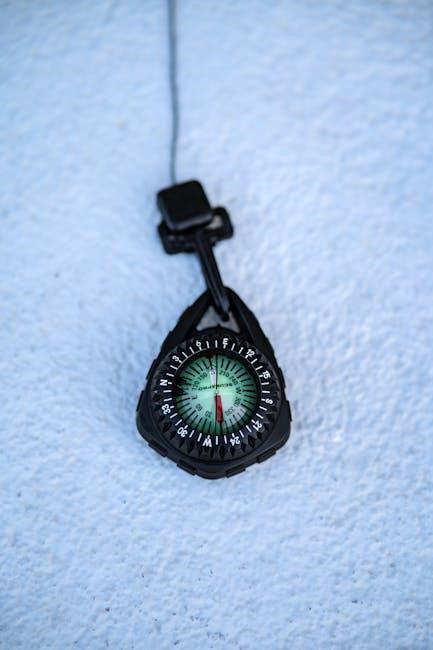Navigating the electrical system of your 2004 Ford Explorer can be simplified with a comprehensive fuse guide. This resource offers diagrams and information about fuse box locations, types, and functions. Understanding your Explorer’s fuses is key to troubleshooting electrical issues.
The 2004 Ford Explorer relies on a fuse system to protect its electrical components from damage caused by overloads or short circuits. This system consists of multiple fuses housed within fuse boxes located in different areas of the vehicle. Each fuse is designed to interrupt the flow of electricity when the current exceeds a specified level, preventing damage to sensitive circuits and components.
Understanding the fuse system is crucial for diagnosing and resolving electrical problems in your 2004 Explorer. Knowing the location of the fuse boxes, the function of each fuse, and how to identify and replace a blown fuse can save you time and money on repairs. This guide will provide you with the necessary information to confidently navigate the fuse system of your 2004 Ford Explorer, ensuring its electrical components are properly protected and functioning correctly. Proper maintenance of this system is important.
Fuse Box Locations on the 2004 Ford Explorer
The 2004 Ford Explorer features two primary fuse box locations: the Power Distribution Box, situated in the engine bay, and the Passenger Compartment Fuse Panel, located inside the vehicle. The Power Distribution Box, also known as the Battery Junction Box, houses fuses and relays that protect critical engine and powertrain components, as well as some exterior lighting circuits.
The Passenger Compartment Fuse Panel, found below the instrument panel on the driver’s side, contains fuses that safeguard interior components such as the radio, power windows, and other accessories. Familiarizing yourself with the exact location of each fuse box is the first step in troubleshooting electrical issues. Knowing where to find these boxes allows for quick access to the fuses and relays, enabling efficient diagnosis and repair of electrical problems. Consulting your owner’s manual can provide specific details.
Power Distribution Box (Engine Bay)
The Power Distribution Box, also referred to as the engine bay fuse box, serves as a central hub for protecting the 2004 Ford Explorer’s vital engine and powertrain components. This box is typically located under the hood, often near the battery or on one of the inner fender wells. It houses an array of fuses and relays responsible for safeguarding systems such as the fuel pump, powertrain control module (PCM), starter motor, and various engine sensors.
This Power Distribution Box also safeguards various exterior components, including some lighting circuits. Accessing the Power Distribution Box usually involves releasing a few clips or latches on the cover. Inside the cover, you’ll typically find a diagram detailing the specific fuse and relay assignments. This diagram is crucial for identifying the correct fuse to check or replace when troubleshooting engine-related electrical issues. Always consult this diagram and your owner’s manual.

Passenger Compartment Fuse Panel
The Passenger Compartment Fuse Panel in the 2004 Ford Explorer is strategically located inside the vehicle to protect interior components and accessories. You can typically find it beneath the instrument panel on the driver’s side, often behind a small access door. This fuse panel safeguards circuits for systems like the radio, power windows, power door locks, interior lighting, and the auxiliary power outlets.
To access the fuse panel, you may need to remove a trim piece or panel. Inside the fuse panel cover, a diagram illustrates the fuse layout and assignments. This diagram is crucial for pinpointing the correct fuse when addressing issues with interior features. The fuses within this panel come in various amperages to match the load requirements of each circuit. Always refer to the diagram and owner’s manual.
Understanding Fuse Box Diagrams

Fuse box diagrams are essential for diagnosing electrical problems in your 2004 Ford Explorer. These diagrams provide a visual representation of the fuse layout within each fuse panel, indicating the specific component or system that each fuse protects. Typically found inside the fuse box cover or in the owner’s manual, a fuse diagram is your key to identifying the correct fuse for a malfunctioning circuit.
A fuse diagram illustrates the location of each fuse and its corresponding amperage rating. This information is crucial for replacing a blown fuse with the correct type and amperage to prevent damage to the electrical system. Diagrams often use symbols or abbreviations to represent the protected components, requiring some interpretation. Consulting the owner’s manual will help you understand the symbols used in the diagram.
Common Fuse Types in the 2004 Ford Explorer
The 2004 Ford Explorer utilizes several types of fuses to protect its various electrical circuits. Understanding these fuse types is essential for proper replacement and maintenance. Blade fuses, also known as spade fuses, are the most common type found in the Explorer. They are characterized by their plastic body and two exposed metal terminals or blades.
Different blade fuses are identified by their color, which corresponds to a specific amperage rating. This color-coding system ensures that you install the correct amperage fuse for the circuit. Common amperage ratings in the 2004 Explorer include 5A, 10A, 15A, 20A, 25A, and 30A. Cartridge fuses, which are larger and cylindrical, may also be present in the power distribution box under the hood.
It’s crucial to only replace a blown fuse with one of the same type and amperage to prevent electrical damage or fire hazards. Always refer to your owner’s manual or the fuse box diagram to identify the correct fuse type for each circuit.
Identifying a Blown Fuse
Knowing how to identify a blown fuse is a crucial skill for any 2004 Ford Explorer owner. A blown fuse is one that has been damaged due to an overload of electrical current, interrupting the circuit it protects. There are two primary ways to visually inspect a fuse to determine if it is blown.
The first method involves looking at the fuse’s filament. Most blade-type fuses have a clear plastic housing, allowing you to see the wire filament inside. If the filament is broken or has a dark, burnt appearance, the fuse is blown and needs replacement.
The second method involves using a test light or multimeter. A test light can be used to check for continuity across the fuse terminals while the fuse is still in the circuit. If the test light illuminates on both sides of the fuse, it is good. If it does not light up on either side or only lights up on one side, the fuse is likely blown. A multimeter can also be used to check continuity; a reading of zero or very low resistance indicates a good fuse, while an infinite reading suggests a blown fuse.

Replacing a Fuse: A Step-by-Step Guide
Replacing a blown fuse in your 2004 Ford Explorer is a straightforward process. First, ensure the ignition is off to prevent electrical shock or further damage. Locate the fuse box diagram, either in your owner’s manual or on the fuse box cover itself, to identify the fuse associated with the malfunctioning component.
Using a fuse puller, usually found in the fuse box, carefully remove the blown fuse. If a fuse puller isn’t available, needle-nose pliers can be used, but be extremely cautious not to damage surrounding fuses or the fuse box itself.
Once the blown fuse is removed, inspect it to confirm it’s indeed faulty. Then, obtain a replacement fuse with the exact same amperage rating. This rating is printed on the fuse itself. Never replace a fuse with one of a higher amperage, as this can cause serious electrical damage or even a fire.
Carefully insert the new fuse into the empty slot. Ensure it is fully seated and secure. Turn the ignition on and test the component that was previously malfunctioning to verify that the new fuse has resolved the issue. If the component still doesn’t work or the new fuse blows immediately, there may be a more significant underlying electrical problem requiring professional attention.
Fuse Assignments and Functions
Understanding the fuse assignments and their respective functions in your 2004 Ford Explorer is crucial for effective troubleshooting. Each fuse protects a specific circuit, safeguarding individual components and systems from overloads. The fuse layout diagrams, found either on the fuse box cover or within your owner’s manual, detail these assignments.
These diagrams will illustrate which fuse corresponds to systems like the radio, power windows, interior lights, exterior lights, engine components, and powertrain elements. For instance, a specific fuse might protect the fuel pump, while another safeguards the anti-lock braking system (ABS). Knowing these assignments allows you to quickly identify a potential problem area.
When an electrical component malfunctions, consulting the fuse diagram can help you pinpoint the likely cause. If the diagram indicates that fuse number 20 controls the power windows, and the power windows are not working, fuse 20 becomes the primary suspect. By checking the fuse first, you can often resolve simple electrical issues without involving a mechanic.
Always refer to the correct diagram for your specific 2004 Ford Explorer model, as variations may exist. Additionally, remember that some fuses may control multiple components, so a single blown fuse could affect several systems.
Fuses for Interior Components (Radio, Power Windows, etc.)
The 2004 Ford Explorer relies on several fuses to protect its interior components, ensuring the smooth operation of features that enhance comfort and convenience. These fuses safeguard circuits powering the radio, power windows, power seats, interior lights, and other essential systems within the cabin. A blown fuse in this category can lead to the malfunction of one or more of these components.
For example, the radio, a central entertainment source, relies on a dedicated fuse to prevent damage from electrical surges. Similarly, power windows, offering convenient control over ventilation, are protected by their own fuse. Interior lights, crucial for visibility inside the cabin, also have fuse protection. Should any of these components fail, checking the corresponding fuse is a vital first step in troubleshooting.
Consult the fuse box diagram, typically located on the inside of the fuse box cover or in the owner’s manual, to identify the specific fuse associated with each interior component. This diagram provides the fuse number and amperage rating, facilitating easy identification and replacement. By understanding the fuse layout for interior components, owners can efficiently diagnose and resolve common electrical issues, maintaining the functionality of their 2004 Ford Explorer’s interior features.
Fuses for Exterior Components (Lights, etc.)
The 2004 Ford Explorer’s exterior lighting system, crucial for safety and visibility, is protected by a series of fuses. These fuses safeguard various lighting components, including headlights, taillights, brake lights, turn signals, and parking lights. Each of these systems has its dedicated fuse to prevent widespread electrical failures. A blown fuse can cause a specific light to stop working, potentially compromising safety, especially during nighttime driving or adverse weather conditions.
Headlights, essential for illuminating the road ahead, have their fuse protection. Taillights, ensuring visibility from the rear, also rely on fuses. Brake lights, signaling deceleration to other drivers, are similarly protected. Turn signals, vital for indicating lane changes and turns, depend on fuses for proper function. Additionally, parking lights, used when the vehicle is stationary, also have fuse protection.
When troubleshooting exterior lighting issues, consulting the fuse box diagram is essential. The diagram, found on the fuse box cover or in the owner’s manual, identifies the specific fuse for each lighting component. By checking the corresponding fuse, owners can quickly determine if a blown fuse is the cause of the problem. Replacing a faulty fuse can restore the functionality of the exterior lights, ensuring safe operation of the 2004 Ford Explorer.
Fuses for Engine and Powertrain Components
The engine and powertrain of the 2004 Ford Explorer rely on a network of fuses to protect critical components. These fuses are designed to safeguard sensitive electronic control units (ECUs), fuel delivery systems, ignition systems, and various sensors that ensure the engine operates efficiently and reliably. A blown fuse in this circuit can lead to a multitude of problems, ranging from a simple engine malfunction to a complete shutdown.
The powertrain control module (PCM), responsible for managing engine performance, is protected by a fuse. The fuel pump, which delivers fuel to the engine, has its fuse to prevent overcurrent situations. The ignition system, including the coils, also has fuse protection. Various sensors, such as oxygen sensors and crankshaft position sensors, rely on fuses to ensure proper functioning.
Troubleshooting engine or powertrain issues requires careful inspection of the relevant fuses. Consulting the fuse box diagram helps identify the fuses associated with specific components. A blown fuse may indicate a short circuit or an overload in the system. Replacing the blown fuse with one of the correct amperage rating is necessary to restore functionality. However, if the fuse blows repeatedly, further investigation is warranted to identify the underlying problem.
Troubleshooting Electrical Problems Using Fuses
Fuses are your first line of defense when tackling electrical issues in your 2004 Ford Explorer. Electrical problems often manifest as a blown fuse, indicating an overcurrent or short circuit in a particular system. Start by identifying the affected component, such as the radio, lights, or power windows. Then, consult the fuse box diagram to locate the fuse associated with that component.
Visually inspect the fuse. A blown fuse typically has a broken filament. Replace the blown fuse with a new one of the same amperage rating. If the new fuse immediately blows again, there is a persistent short circuit that needs to be addressed. Disconnecting the affected component can help isolate the problem.
If the fuse blows intermittently, it may be due to a loose connection or a component that is drawing excessive current sporadically. Check the wiring and connectors associated with the circuit. Corrosion or damage to the wiring can also cause issues. If the problem persists, professional diagnostic assistance may be required to pinpoint the root cause of the electrical problem.

Additional Resources and Support for 2004 Ford Explorer Owners
Finding the Correct Fuse Diagram for Your 2004 Ford Explorer
Locating the precise fuse diagram tailored to your 2004 Ford Explorer is crucial for effective troubleshooting and repairs. Several resources can assist you in this search. The owner’s manual is the primary source and usually contains detailed fuse diagrams for both the power distribution box (engine bay) and the passenger compartment fuse panel. This diagram will show the location and function of each fuse.
Online databases and forums dedicated to Ford vehicles are also valuable resources. Many websites offer downloadable fuse diagrams specifically for the 2004 Explorer model year. When searching online, be specific with your search terms, including the year and model of your vehicle, to ensure you find the correct diagram.
Additionally, some aftermarket repair manuals provide fuse diagrams and wiring schematics. These manuals often contain more detailed information than the owner’s manual. Always verify that the diagram you find matches the actual fuse layout in your vehicle, as slight variations may exist. Consulting multiple sources can help ensure accuracy.




